Fiat 500 vs Fiat Panda – Differences & prices compared
Compare performance, boot space, consumption and price in one view.
Find out now: which car is the better choice for you – Fiat 500 or Fiat Panda?
The Fiat 500 (Hatchback) comes with a Electric engine and Automatic transmission. In comparison, the Fiat Panda (Hatchback) features a Petrol MHEV engine with Manuel transmission.
When it comes to boot capacity, the Fiat 500 offers 185 L, while the Fiat Panda provides 225 L – depending on how much space you need. If you’re looking for more power, decide whether the 118 HP of the Fiat 500 or the 70 HP of the Fiat Panda suits your needs better.
In terms of consumption, the values are 13 kWh per 100 km for the Fiat 500, and 5 L for the Fiat Panda.
Price-wise, the Fiat 500 starts at 23100 £, while the Fiat Panda is available from 14100 £. Compare all the details and find out which model fits your lifestyle best!
In the ever-popular showdown between the Fiat 500 and Fiat Panda, each model offers a distinct charm tailored to different driving needs. The Fiat 500 captivates with its stylish design and zippy urban maneuverability, making it a favorite among city dwellers. Meanwhile, the Fiat Panda stands out for its practicality and spacious interior, showcasing versatility that appeals to families and adventure seekers alike.
Fiat 500
The Fiat 500 is a compact and stylish city car that has captured the hearts of urban drivers with its charming retro design. Its nimble handling and efficient engine make navigating tight city streets a breeze, while its cosy interior offers a surprising amount of comfort and modern technology. The car's iconic silhouette and vibrant colour options ensure it stands out, offering a unique blend of timeless appeal and contemporary flair.
details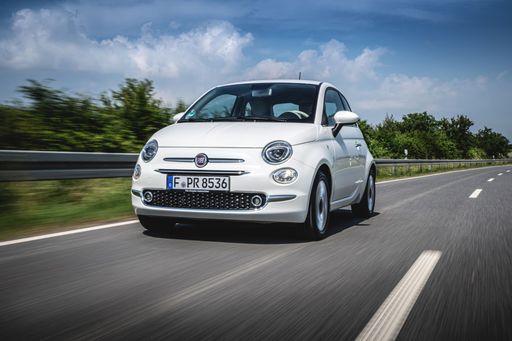 @ media.stellantis.com
@ media.stellantis.com
 @ media.stellantis.com
@ media.stellantis.com
 @ media.stellantis.com
@ media.stellantis.com
Fiat Panda
The Fiat Panda is a compact city car that brilliantly combines practical design and efficient functionality. Its boxy shape provides ample interior space and visibility, making it a favourite among urban drivers. With its reputation for reliability and affordability, the Panda continues to be a top choice for those seeking a no-frills, dependable vehicle.
details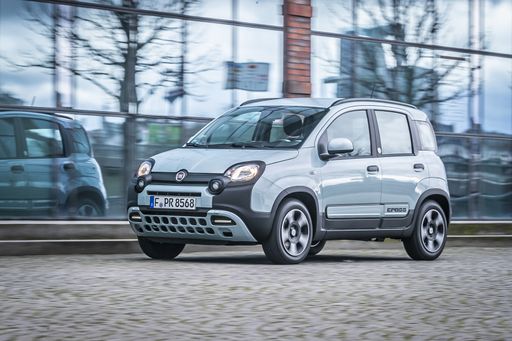 @ media.stellantis.com
@ media.stellantis.com
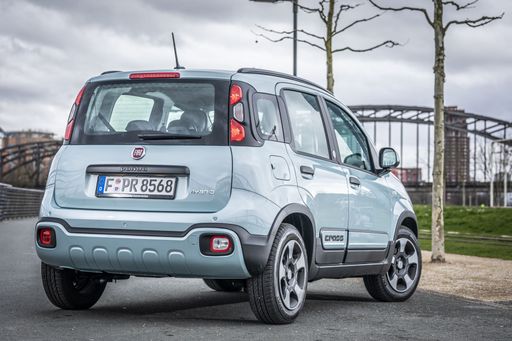 @ media.stellantis.com
@ media.stellantis.com
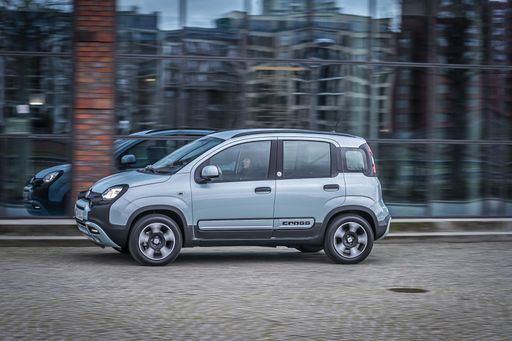 @ media.stellantis.com
@ media.stellantis.com
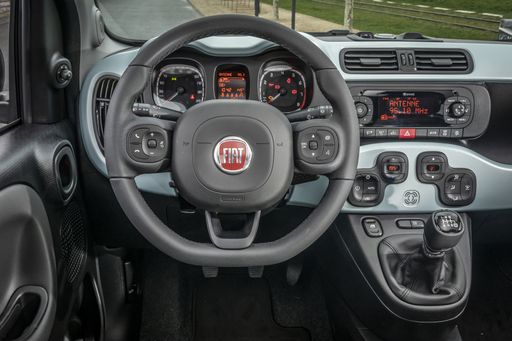 @ media.stellantis.com
@ media.stellantis.com
The automotive landscape has witnessed significant evolution, with compact cars gaining immense popularity due to their practicality and efficiency. Two models that dominate this category from Fiat are the Fiat 500 and the Fiat Panda. While both are celebrated for their unique characteristics, this comparison will delve into their technical aspects and innovations to help potential buyers make an informed decision.
Design and Body Style
Both the Fiat 500 and Fiat Panda are hatchbacks, but they cater to slightly different tastes. The Fiat 500 is more stylistically emblematic, with a retro design that appeals to those looking for a trendy urban vehicle. In contrast, the Fiat Panda boasts a more utilitarian design, offering ample interior space and practicality for those who prioritize functionality over form.
Performance and Engine Options
The Fiat 500 stands out with its electric engine options, delivering a quiet and emission-free drive. With two models available, it produces up to 118 HP, with a torque of 220 Nm. The 2023 Fiat 500 features an acceleration of 0-100 km/h in 9 seconds and has a top speed of 150 km/h. Its electric range is impressive, providing a maximum of 321 km on a full charge.
On the other hand, the Fiat Panda is equipped with a petrol MHEV (mild hybrid electric vehicle) engine, generating 70 HP and 92 Nm of torque. The 2024 model's performance is more modest, with an acceleration of 0-100 km/h taking up to 13.9 seconds. The Panda reaches a top speed of 164 km/h, making it a reliable choice for city driving.
Fuel Efficiency and Environmental Impact
When it comes to fuel efficiency, the Fiat 500 showcases its advantage as an electric vehicle, with a consumption rating between 13.0 to 14.7 kWh/100km. In terms of environmental impact, it has a CO2 efficiency class of A, producing zero emissions.
In contrast, the Fiat Panda's petrol engine has a consumption range of 5 to 5.1 L/100km, with CO2 emissions between 113 to 116 g/km. Its efficiency class varies from C to D, which may be a consideration for eco-conscious buyers.
Interior Space and Comfort
Interior design and comfort are critical when comparing the two models. The Fiat 500 comfortably seats four, with a trunk capacity of 185 liters. Its compact size (3632 mm in length) makes it ideal for city maneuverability, although it provides less cargo space compared to its counterpart.
The Fiat Panda, however, can seat up to five and offers a trunk capacity of 225 liters, making it practical for families or those needing extra storage space. Measuring between 3653 mm to 3705 mm in length, the Panda provides additional room without sacrificing comfort.
Innovative Features and Technology
Innovation plays a vital role in both models. The Fiat 500 is equipped with a cutting-edge infotainment system, offering smartphone connectivity and advanced driver-assistance features, enhancing the overall driving experience.
The Fiat Panda, while perhaps lacking in some high-tech features, offers solid essentials for daily driving, emphasizing durability and practicality. It's designed for ease of use, especially in urban environments.
Conclusion: Which One to Choose?
In conclusion, the choice between the Fiat 500 and Fiat Panda ultimately depends on individual preferences and needs. The Fiat 500 excels in design, electric performance, and modern technology, making it suitable for environmentally conscious urban dwellers. Meanwhile, the Fiat Panda offers practicality, spaciousness, and a reliable petrol-powered option, catering more to families or those who value a straightforward, functional vehicle. Whether you lean towards style or utility, both models uphold Fiat’s legacy of producing quality compact cars.

|

|
|
|
|
Costs and Consumption |
|
|---|---|
|
Price
23100 - 35600 £
|
Price
14100 £
|
|
Consumption L/100km
-
|
Consumption L/100km
5 L
|
|
Consumption kWh/100km
13 - 14.7 kWh
|
Consumption kWh/100km
-
|
|
Electric Range
190 - 321 km
|
Electric Range
-
|
|
Battery Capacity
21.3 - 37.3 kWh
|
Battery Capacity
-
|
|
co2
0 g/km
|
co2
113 g/km
|
|
Fuel tank capacity
-
|
Fuel tank capacity
38 L
|
Dimensions and Body |
|
|---|---|
|
Body Type
Hatchback
|
Body Type
Hatchback
|
|
Seats
4
|
Seats
4
|
|
Doors
3 - 4
|
Doors
5
|
|
Curb weight
1330 - 1475 kg
|
Curb weight
1055 kg
|
|
Trunk capacity
185 L
|
Trunk capacity
225 L
|
|
Length
3632 mm
|
Length
3635 mm
|
|
Width
1683 mm
|
Width
1643 mm
|
|
Height
1527 mm
|
Height
1551 mm
|
|
Payload
250 - 305 kg
|
Payload
365 kg
|
Engine and Performance |
|
|---|---|
|
Engine Type
Electric
|
Engine Type
Petrol MHEV
|
|
Transmission
Automatic
|
Transmission
Manuel
|
|
Transmission Detail
Reduction Gearbox
|
Transmission Detail
Manual Gearbox
|
|
Drive Type
Front-Wheel Drive
|
Drive Type
Front-Wheel Drive
|
|
Power HP
95 - 118 HP
|
Power HP
70 HP
|
|
Acceleration 0-100km/h
9 - 9.5 s
|
Acceleration 0-100km/h
13.90 s
|
|
Max Speed
135 - 150 km/h
|
Max Speed
164 km/h
|
|
Torque
220 Nm
|
Torque
92 Nm
|
|
Number of Cylinders
-
|
Number of Cylinders
3
|
|
Power kW
70 - 87 kW
|
Power kW
51 kW
|
|
Engine capacity
-
|
Engine capacity
999 cm3
|
General |
|
|---|---|
|
Model Year
2023 - 2025
|
Model Year
2024
|
|
CO2 Efficiency Class
A
|
CO2 Efficiency Class
C
|
|
Brand
Fiat
|
Brand
Fiat
|
Fiat 500
The Timeless Charm: Introducing the Fiat 500
The Fiat 500 has long been a symbol of Italian style and urban practicality. As we navigate a new era in automotive history, the Fiat 500 continues to adapt and remains a much-loved vehicle worldwide. Let’s delve into the latest technical details and innovations that make this car a modern classic.
Electric Heartbeat: The Engines and Performance
The latest Fiat 500 models are powered entirely by electricity, showcasing a commitment to sustainable mobility without sacrificing performance. Under the stylish bonnet lies a choice between two power outputs, starting from a lively 70 kW (95 PS) to an energetic 87 kW (118 PS). This range of electric motors ensures that whether you’re navigating narrow city streets or cruising along open roads, the Fiat 500 delivers engaging performance with zero emissions.
Efficiency Meets Innovation: Energy Consumption and Range
Efficiency is at the forefront of the Fiat 500’s design. With energy consumption figures as low as 13 to 14.7 kWh/100km, the car balances power and performance efficiently. Electric range varies across the models, from 190 km for those designed for short urban commutes to an impressive 321 km for longer journeys. The innovative lithium-ion battery options—spanning 23.8 kWh to 42 kWh—are neatly integrated to maintain the car’s compact dimensions.
Technological Marvel: Smart Features and Design
The Fiat 500 is adorned with advanced features that enhance convenience and safety. It comes with an intuitive infotainment system that includes smartphone connectivity, navigation, and various driver assistance technologies, ensuring a seamless driving experience. The “La Prima” equipment line offers premium materials and a luxurious feel inside the cabin, making every journey comfortable and enjoyable.
Urban Flexibility: Compact Dimensions and Practicality
Designed for urban environments, the Fiat 500’s dimensions make it ideally suited for city dwellers. With a length of 3632 mm, width of 1683 mm, and height of 1527 mm, it’s easy to navigate through traffic and park in tight spaces. Despite its compact size, the Fiat 500 provides a practical boot capacity of 185 litres, perfect for daily errands or a weekend getaway.
Commitment to the Environment: Sustainability Focus
The Fiat 500 exemplifies a dedication to eco-friendliness with its CO2 emissions at zero, earning it an A in CO2 efficiency class. By choosing this vehicle, drivers are contributing towards a future with reduced automotive pollution, supporting cleaner air and healthier urban living.
Conclusion: The Future of Urban Driving
The Fiat 500 perfectly blends timeless style with modern electric innovations, setting a precedent for future city cars. Whether you prioritise aesthetic design, sustainable driving, or a premium driving experience, the Fiat 500 is designed to exceed expectations and redefine urban transportation.
Fiat Panda
A Renaissance on Wheels: The Fiat Panda
The Fiat Panda, with its unmistakable charm and practicality, has long been a fixture in the compact car segment. In 2024, Fiat has again managed to reinvent this beloved model, introducing innovative features and cutting-edge technology. Let's delve into what makes the new Fiat Panda a formidable player in the world of urban mobility.
Sleek Design and Practical Dimensions
The Fiat Panda retains its iconic tall and boxy silhouette, ideal for urban environments. Measuring between 3653 mm and 3705 mm in length, and with a width range of 1643 mm to 1662 mm, it's compact enough for tight city streets yet Spacious enough to ensure comfort. The height varies between 1551 mm and 1657 mm, offering a commanding view of the road and easy ingress and egress—the Panda's ample boot space of 225 litres and its versatile five-door configuration further boast its practical nature.
Powertrain Innovations
Under the bonnet, the Fiat Panda houses a 1.0 GSE Hybrid engine. This mild-hybrid petrol engine is designed to enhance fuel efficiency and reduce emissions. Delivering 70 PS (51 kW), this engine is a testament to Fiat's dedication to marrying performance with eco-friendliness. The innovative three-cylinder engine offers a torque of 92 Nm, providing sufficient power for urban and suburban driving. With a CO2 emission rating of 113 to 116 g/km, it occupies the C to D CO2-efficiency class range.
Performance that Suits Urban Life
The Panda excels in urban driveability, offering a top speed between 155 km/h and 164 km/h. The acceleration from 0 to 100 km/h takes between 13.9 and 14.7 seconds, making it spirited enough for daily commuting while ensuring optimal fuel economy, with a consumption of 5 - 5.1 L/100km. Such statistics highlight its balance of performance and efficiency, echoing Fiat's commitment to practical performance.
Interior, Comfort, and Connectivity
Inside, the Fiat Panda exudes a blend of comfort and modern technology. It caters to four to five passengers comfortably, offering a thoughtfully designed interior to enhance the user experience. Features such as user-friendly controls, a well-organised dashboard, and optional infotainment systems keep the Panda competitively modern in its segment.
Safety and Technology
The Fiat Panda is equipped with various safety features, designed with urban journeys in mind. It offers technologies such as traction control and hill-hold assist, catering to the demanding stop-and-go nature of city driving. The enduring charm of the Fiat Panda is bolstered by its underappreciated technological sophistication, ensuring that every journey is as safe as it is enjoyable.
Affordability and Value
With a price range from €15,990 to €19,290, the Fiat Panda remains an excellent value proposition. It is cost-effective, economical to run, and backed by Fiat’s reputation for reliability, making it a prudent choice for customers looking to balance style, efficiency, and value.
The Fiat Panda of 2024 stands as a testament to Fiat’s ingenuity, maintaining its reputation for practicality while embracing modern efficiency and innovation. Whether for the daily commute or a spontaneous adventure, the Panda continues to deliver a driving experience that is both enjoyable and efficient.
Which drive types are available for the Fiat 500?
Available as .
The prices and data displayed are estimates based on German list prices and may vary by country. This information is not legally binding.
